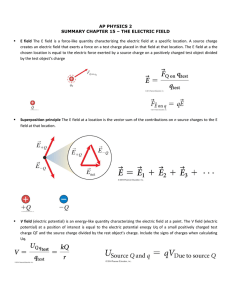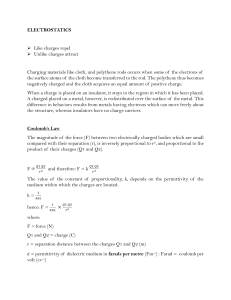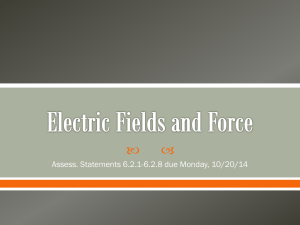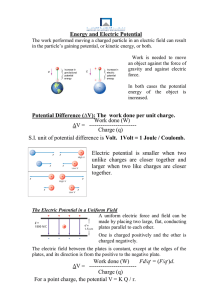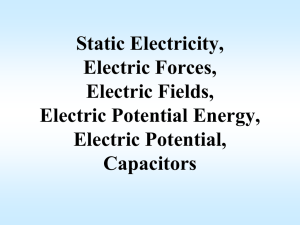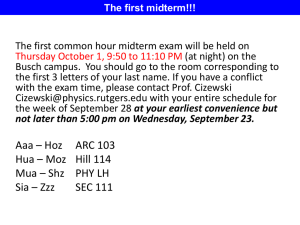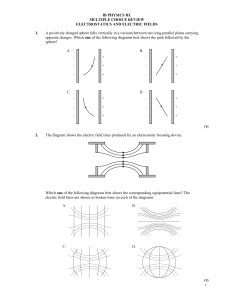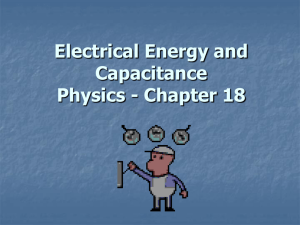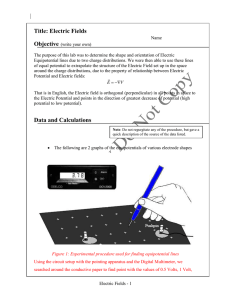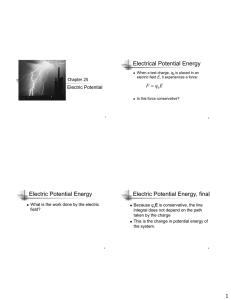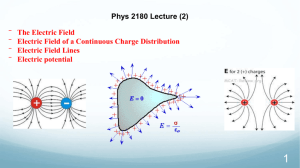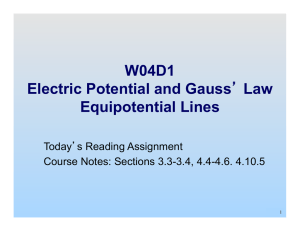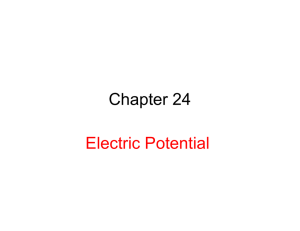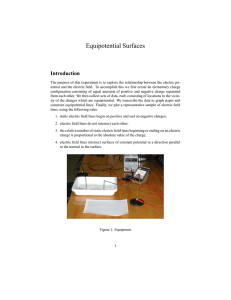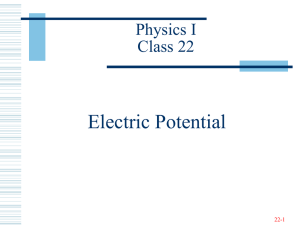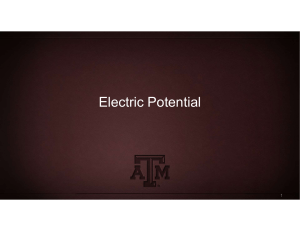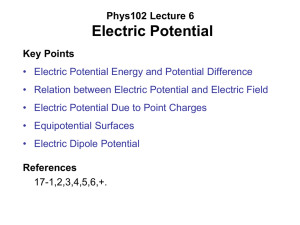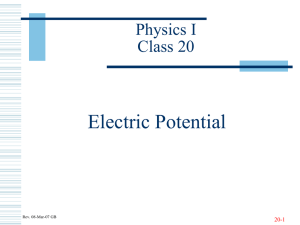Electric Fields and Electric Potential
advertisement
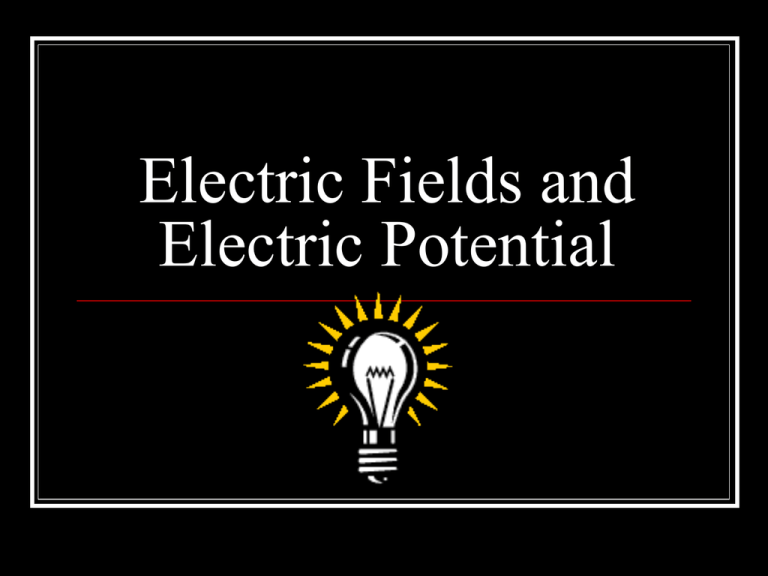
Electric Fields and Electric Potential Electric Fields Electric Field – A region in space around a charged object in which a stationary charged object experiences an electrical force because of its charge. E = F/q F is the electrostatic force q is the charge on the small test particle. F is a vector therefore E is also. Cont’d The field is basically the force acting on a test charge based on the size of that test charge Units are therefore N/C The direction of the field is the direction of the force on a small positive test charge. Must be small so as not to move the charged object from its original location. The arrows show the direction of the field and the length shows the magnitude. A + object will repel a positive test and a – object will attract a positive test. Alternative View of E Electric field lines can be drawn to represent an electric field. Electric field lines NEVER cross each other. The arrows show direction and the distance between the lines shows the magnitude. Always away from a positive charge and toward a negative charge. Charged Plates The electric field between two plates is uniform. Field still in the direction of positive to negative. Electric Potential Energy When two unlike charges are moved away from each other, work must be done This work takes the form of stored potential energy. This work done in an electric field to move a charge is called the Electric Potential Difference. Electric Potential Difference Electric Potential is also known as a Volt (V) V = W/q Other units?? V for like charges is positive because work is done to bring the charges together. V for unlike charges in the same situation would be negative. Cont’d A car battery has a potential difference of 12 volts from the positive terminal to the negative terminal. AKA 12 joules/Coulomb For every Coulomb of charge that passes to the other terminal 12 joules of work are done on the surroundings. You alternator does work on the battery to move those charges back hence storing them as potential energy again. The Electron Volt The energy gained by an electron or proton as it passes through a potential difference of 1V. V = PE/q 1J/C = PE/ 1.6x10-19 So PE equals 1.6x10-19J or 1eV More on this in modern physics Electric Fields and Electric Potential E = F/q Multiply each side by ∆d E∆d = F∆d/q E∆d = W/q but W/q = V so E∆d = V or E = V/∆d Cont’d E = V/∆d The electric field in a given point in space is equal to the rate at which the potential difference changes over distance. Equipotential Lines Just as electric field lines represent E around a charge, equipotential lines represent the electric potential around a charge. Cont’d Equipotential lines are ALWAYS PERPENDICULAR to the E field lines. The potential difference between any two points on an equipotential line is zero. No work needs to be done to move a charge between these two points Millikan’s Oil Drop Oil passed through an atomizer is given a net charge from friction. When between two charged plates, the oil drop would move toward the positively charged plate. Findings By adjusting E the oil drop would float. By finding the weight of the oil drop, he was able to find the electrostatic force. He would ionize the air using x-rays and could remove electrons from the oil drops. The change in the the charge was always a multiple of 1.6x10-19C


